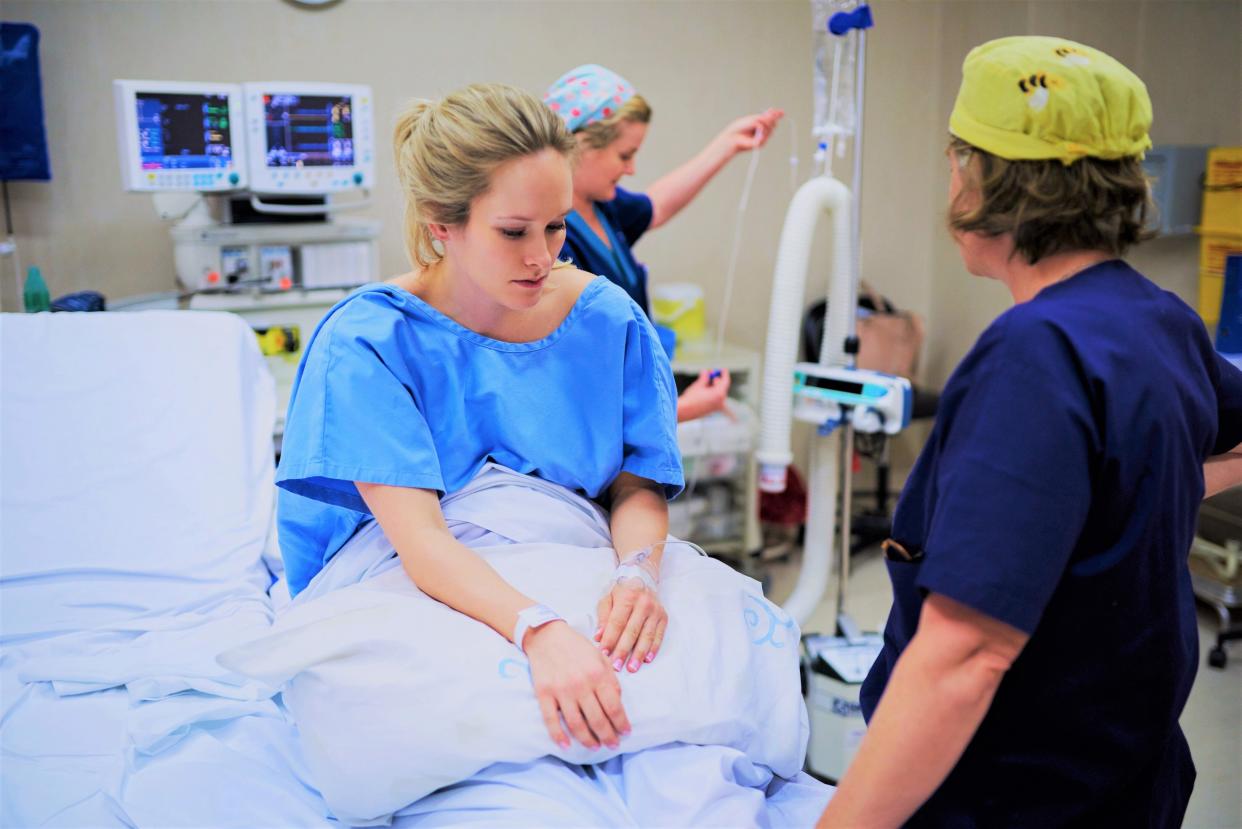Emergency C-Sections: A Guide for Moms-To-Be

Getty Images/Yuri_Arcurs
Most moms-to-be imagine giving birth vaginally. They picture themselves breathing through contractions and squeezing their partner's hands while pushing. But it turns out that 32% of babies in the United States are delivered through Cesarean section (C-section) today.
C-sections can be planned if doctors feel they’re safer than vaginal births. Medical reasons for an elective C-section include a too-large baby, pregnancy with multiples, breech presentation, placenta previa, and maternal medical conditions like diabetes, high blood pressure, HIV, and heart disease.
Other times, however, doctors decide on a last-minute C-section after labor has already begun. These unplanned surgeries—called emergency C-sections—can be life-saving measures for the mother or her baby. Learn more about the reasons behind emergency C-sections, and what to expect if you need to get one.
Reasons for an Emergency C-Section
Doctors give the go-ahead for an emergency C-sections if labor/delivery could compromise the safety of the mother or baby. Here are common reasons for an emergency C-section.
The labor isn’t progressing normally. If a woman labors too long without cervix dilation, she risks an infection.
The baby is in distress; this is often characterized by an irregular heartbeat.
You experience cephalopelvic disproportion, meaning the baby’s head is too large to fit through the pelvis.
A prolapsed umbilical cord (one that drops through the cervix before the baby) disrupts the baby’s oxygen supply.
Placental abruption causes the placenta to separate from the uterine wall; this could lead to complications and bleeding.
A scar from a previous C-section rips open, causing intense bleeding (uterine rupture).
Emergency C-Section Procedure
Emergency C-sections can be a chaotic scene with everything happening at once. You'll first have your lower abdomen prepped for surgery. It will be washed and perhaps shaved, and you'll be given antibiotics and other fluids through an IV. For pain management, you’ll either have your labor epidural dosed up to C-section level or have a quick spinal—both will make you numb from your chest down. (And if doctors are pressed for time, don’t worry about emergency C-section without anesthesia. General anesthesia, which completely knocks you out, is usually reserved for extreme situations because it can be administered very quickly.)
Once the anesthesiologist is certain that you're numb, your doctor will make the first incision in your abdomen, which will be about 4-6 inches long (usually horizontal, toward your pubic bone). You will be awake, but you won't feel the doctor make the incision. You probably won't see it, either, because there’s typically a surgical sheet shielding your abdomen from your view.
Then the doctor will makes a second incision in your uterus, through which your baby is delivered. You may feel a slight tugging sensation as your baby emerges. A pediatrician will immediately check out your baby, and if all is well, he'll be given to either you or your partner to hold. While your new family gets acquainted, your doctor will remove the placenta and begin to close both incisions.
How long does an emergency C-section take? The actual delivery of your baby will happen only 10-15 minutes after the start of the procedure. The rest of the surgery—stitching up the two incisions and getting you into recovery—takes approximately 30 minutes more.
Emergency C-Section Recovery
After an emergency C-section, you'll be taken to a recovery room where your blood pressure, bleeding, pulse rate, and respiration will all be monitored. The catheter may remain in for about 12-24 hours after surgery, and you'll continue to get fluids through an IV until the next day. You may stay in bed for the first day, though you'll be encouraged to change positions, roll over, and sit up in bed.
Most women will experience pain around the incision, and you’ll likely be given pain medication for discomfort. In some instances you may be given a self-administered morphine drip, which allows patients to receive pain medication when they need it by pressing a button.
You should be able to breastfeed your baby by laying a pillow across your abdomen to help support him in your arms as he nurses, and you should be walking within 24 hours. You will be released from the hospital in about 3 or 4 days, and at home, you should follow doctor instructions for emergency C-section scar care.
Handling the Emotions of an Unplanned C-Section
No matter how many preventive steps you've taken or how healthy your pregnancy has been, an emergency C-section sometimes isn't preventable. Some women feel guilty or like they’ve missed out a traditional birth experience. However, it's important to maintain perspective.
It's true that a C-section carries the inherent risks of any major surgery, such as internal bleeding, blood clots, infection, or damage to your organs. Some babies also have brief respiratory problems following a cesarean. However, thanks to improved anesthesia and surgical techniques and better antibiotics, C-sections carry fewer risks than ever, and having a healthy baby is far more important, in the long run, than delivering vaginally.

